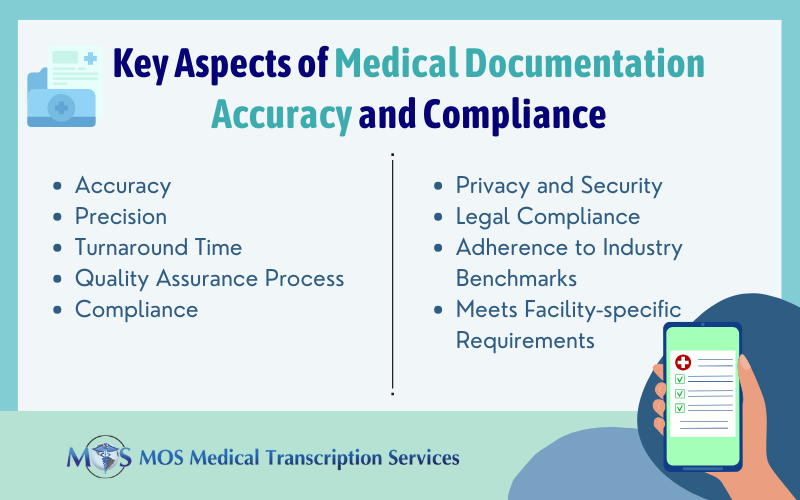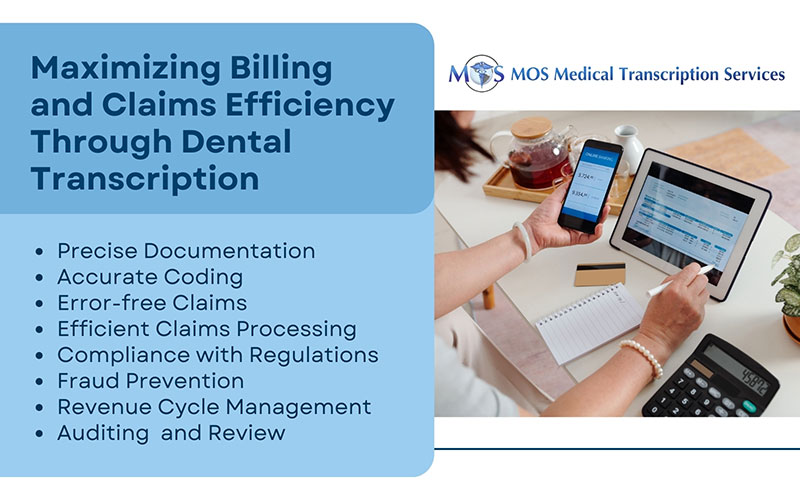
Table of Contents
Transcribing operative notes, surgical reports, and other surgical documentation requires meticulous attention to detail.
Operative notes are the detailed and comprehensive documentation of a surgical procedure that is recorded by the surgical team. These notes are typically dictated by the primary surgeon or other authorized medical personnel who were present during the surgery and usually dictated or entered electronically into the patient’s medical record. Given the importance of ensuring quality surgical notes, billing requirements, medicolegal concerns, and other secondary applications of operative notes, effective operative note documentation is critical. Surgeons can ensure accurate EHR documentation with the help of a competent medical transcription service organization.
What Is an Operative Note?
The operative note is an essential part of the medical record and provides a detailed account of the surgical procedure performed, including all pertinent information such as the specific steps taken, instruments used, findings, and outcomes. It is the most significant piece of information in the surgical chart.
It serves as the formal record of what happened in the operating room. It must back up the patient’s need for treatment, detail each step of the surgery, and show the results of the operation. The operative report is the most common document used to support claims for payment to the surgeon, surgical team, and facility. Operative report documentation is also important for auditors and payers to confirm that the supporting paperwork matches all of the codes listed on the claim.
Main Components of Operative Notes
Operative notes contain the following information:
- Pre-operative information: This includes the patient’s name, age, medical history, and relevant pre-operative assessments, such as lab results, imaging findings, and other pertinent information that may have impacted the surgical procedure.
The History/Indications for Operation section explains why the surgery is necessary and, if appropriate, what happened before it. The surgeon provides information about the patient’s past medical history relevant to the procedure, their family history relevant to the procedure, previous or unsuccessful therapies, how the disease or injury occurred, when it occurred, and for how long.
- Heading: The operative report’s heading includes the following information:
- Facility Information – the facility’s name, address, and the patient’s unique medical record number.
- Patient information – the patient’s legal name, date of birth, age, and gender (certain processes are age- and gender specific).
- Date of service – The date on which the operation was done.
- Information about the surgical team – the primary surgeon’s name and the names of any co-surgeons, residents, or surgical assistants, and the anesthesiologist’s or CRNA’s name.
- Surgical procedure details: The operative notes provide a detailed description of the surgical procedures performed, including the type of surgery, the type of anesthesia used, the specific surgical technique or approach used including closure technique, the names and dosages of medications administered, any modifications or deviations from the standard procedure, the use of any implants or specialized equipment (such as a microscope, robotic arms, etc.); complications, and estimated blood loss.
- Instruments and equipment used: The operative notes list the names of the surgical instruments, devices, and equipment used during the procedure, as well as any complications or issues encountered with the equipment.
- All eligible diagnoses are listed to show medical need for pre- and post-operative care.
- Body: This section contains the following details:
- Description of the Procedure(s) – This part should include a description of every step of the procedure, from preparation to dressing and closure, even if it is already noted in the Heading. If the surgery was performed bilaterally, both sides must be documented here. The proper side must be recorded if something is done unilaterally.
- The following elements are also recorded: the surgical technique (whether open or endoscopic), the placement of the implants or devices previously listed in the Heading, the use of robotic or microscopic assistance previously listed in the Heading, any specimens collected or frozen section procedures performed, intraoperative monitoring or testing, and any surgical procedures performed by another surgeon
- The most crucial section of the operating report is the description of the procedure(s). This is when the fundamental medical coding principle “IF IT’S NOT DOCUMENTED, IT’S NOT DONE,” comes into play. If a technique is not included here, auditors or payers may choose not to reimburse for it or may choose to recover a prior payment for it.
- Coding must come from this part as well as from the Heading’s procedure listings. The heading’s procedures should just serve as a coder’s check list for what to look for in the operative report’s body. The surgeon needs to be contacted for confirmation and potential correction if the coder discovers a procedure is missing, bilateral documentation is missing, or there are any other inconsistencies between the heading and the body.
- Findings: Operative notes record any notable findings during the surgery, such as anatomical structures encountered, abnormal or diseased tissue identified, and any unexpected findings that may have influenced the surgical approach or outcomes.
- Intraoperative events: Operative notes also document any significant events or incidents that occurred during the surgery, such as bleeding, complications, changes in surgical plans, or unexpected events.
- Postoperative care: The operative notes may also include information about postop care instructions, wound closure techniques, drains or catheters placed, and other relevant postoperative procedures or interventions.
- Outcome: Operative notes also provide a summary of the surgical outcome, including the status of the patient at the end of the surgery, any postoperative complications or concerns, and the plan for further postoperative care.
General Principles of Operative Notes Documentation
- A member of the operating team is required to complete the operative note right away following an operation (either handwritten or typed). All post-operative notes should be included as the most recent entry in the patient’s current medical records, and they should travel with the patient to recovery and subsequently, the ward. It is crucial to ensure that the operation note including the post-operative instructions, are written properly.
- The intra-operative findings, including any disease, should be clearly and concisely stated as part of the surgical diagnosis. A reference copy of any photographs taken during the process should be included with the operative note.
- All the surgical processes, from the first skin incision through closure, should all be accurately described exactly as they are performed. This could include any pertinent vessel ligations, implants or prostheses used, tissue removals, and alterations in specified anatomical structures.
- The closure should be documented along with the material(s) used and the closed layers, such as fascia, fat, and skin. Any intraoperative complications should be accurately reported, together with any specimens obtained and the estimated blood loss (written in mLs) recorded.
- To guarantee proper post-operative care, post-operative instructions should be carefully documented to include any specific plans that must be followed after the treatment. This covers any drugs to be administered, whether the patient is able to eat and drink, whether they may be sent home, and any required follow-up activities (including dressing changes or suture removal)
- After the operation note has been written, it should be signed, dated, and the signing doctor’s name, grade, and registration number should be included.
Like other medical reports, operative report documentation is a significant document in the EHR. These reports, which offer thorough health information about your patients, can be shared with other healthcare professionals and organizations including laboratories, specialists, medical imaging facilities, pharmacies, emergency facilities, etc. Partnering with a reputable medical transcription outsourcing company can transform surgeon dictations into correct surgical notes.


